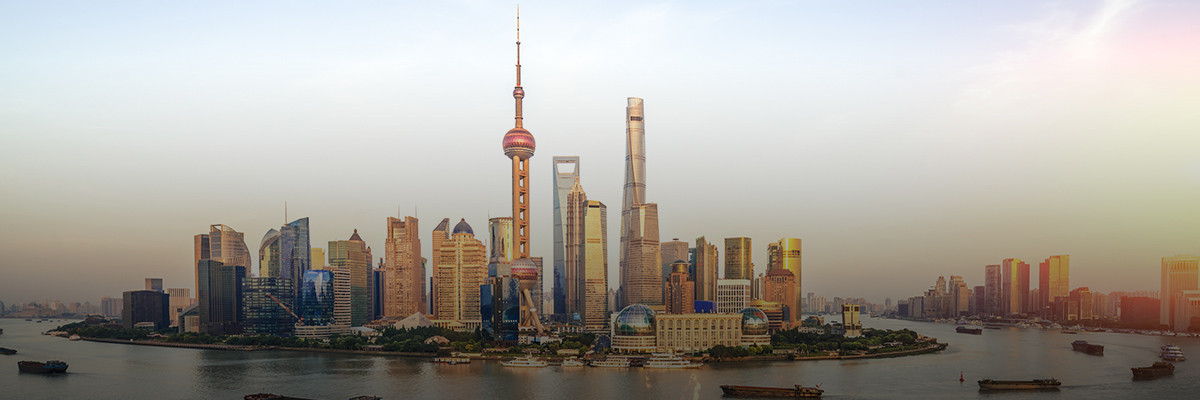
Authors
-

Director, Transformation, BSR
-
Jeremy Prepscius
Former Vice President, Asia-Pacific, BSR
-
Olivia Li
Former Manager, Transformation, BSR
The 19th Central Committee of the Communist Party of China (CPC) held its Fifth Plenary Sessions in Beijing in October 2020 to set the outline for the upcoming 14th Five-Year Plan (2021-2025) (14th FYP). The final version of the 14th FYP will be released at the National People's Congress in March 2021. What exactly is the 14th FYP? What are the key macro themes for the sustainability world to watch, and how will they impact business?
What is the 14th FYP and why is it particularly significant?
While every Five-Year Plan (FYP) is emblematic of its own time, the 14th FYP is particularly significant and noteworthy due to China’s impressive recovery from the pandemic, scientific and technological revolution during geopolitical tensions, and its rising profile in international affairs and role in global supply chains. Meanwhile, the time period of the 14th FYP (2021-2025) will be critical for China to lay foundation for many of its ambitious commitments, including but not limited to peaking carbon emissions by 2030 and doubling both current GDP and per capita GDP by 2035. There is no doubt that the 14th FYP will continue to steer the country’s development for the next five years.
Since 1953, four years after the founding of the People’s Republic of China, the FYPs have been the single most important guiding document. Over the last 10 years, the FYP has shifted from a political plan to policy direction for the country’s future economic and social development with strong implementation principles. And the impact of the FYP to business has become more relevant.
Published in 2016, the 13th FYP (2016-2020) put forward comprehensive and balanced development goals for the country and emphasized sustainable development through industrial upgrading, boosting domestic consumption, increasing urbanization rate, eliminating poverty, and improving environmental protection. This was the first time that China set clear sustainability goals and direction, which took root in the public as a simple phrase: "Clear water and green hills are gold and silver mountains."
Despite the U.S.- China trade war and the COVID-19 pandemic, most of the objectives outlined in the 13th FYP were achieved by the end of 2020, especially those regarding environmental protection including the “3-year Blue Sky Battle”, an action plan to improve air quality, which has shocked business operation. Other important achievements included:
- achieved economic growth and grew the middle-income population;
- accomplished environmental and ecological goals related to concentration of fine particles, carbon emissions, water quality, and the elimination of other chemical pollutants, in addition to committing to peak its emissions before 2030 and reach carbon neutrality before 2060;
- eliminated extreme poverty and lifted more than 55 million people out of penury during the period.
What sustainability themes should we expect in the 14th FYP?
The full and complete version of the 14th FYP will be launched at the National People's Congress this month. However, based on discussions in China and the documents from the Central Committee CPC’s Fifth Plenary Sessions, we know there are three major trends to watch:
- Accelerating green economy and net-zero transition: The 14th FYP period will be the most critical time to steer the overall economic development toward China’s 2030 emission peak commitment and to lay the foundation for its green economy and 2060 net-zero goals. It is expected that environment and climate will be put firmly at the heart of the next FYP, and we also anticipate that many implementation principles and tools will be developed quickly in 2021 to steer the green transformation of key industries and push for clean energy market and solutions innovation at regional level.
China will become an important market and key contributor for international businesses to achieve their climate goals, especially contributing to Scope 3 emissions reduction. This might also result in increasing collaboration opportunities between businesses and other stakeholders to build their renewable energy portfolios and Scope 3 emission reduction pathways. We expect the 14th FYP to include clear measures to guide business actions, especially regarding emission control, green energy strategy, waste management, and recycling. The sectors most likely to be affected include textile, manufacturing, transportation/logistics, agriculture, energy, and infrastructure.
- Boosting domestic market through innovation and technology: In light of the challenging external macro environment and in order to continue to grow China’s national economy and personal income levels, the 14th FYP will focus on boosting the economy through strengthening "internal circulation" (domestic economic activities), accelerating industry upgrades with innovation and technology, and pushing for digitalization with increased provision of "new infrastructure" such as data centers, 5G networks, AI, and internet of things (IoT).
To compete in the Chinese market, businesses will have to show a stronger commitment to innovation and digitalization. Consumer-facing brands will need to cope with and harness various digital channels for marketing, sales, consumer communication, and even product innovation. At the same time, they will need to prepare their manufacturing and research and development (R&D) for fast-changing consumer and policy demand. All of this is expected to take place in China faster than in other parts of the world.
China’s overall goal is to build a well-developed nation with stronger economic power by 2035, and to do so while achieving its climate goals. In this regard, it calls for aggressive business actions to support transforming the country’s industry structure towards energy and resource efficiency. Business will need to take quick measures to transform their energy structure, embrace technology development, and marketing. This will call for business to develop a strategic plan to update their supply chain and plan for growth in tandem with this policy trend.
- Improving well-being and health through enhancing social investment: On the social side, the 14th FYP will continue to improve people’s well-being and health through investing in education and healthcare, providing higher-quality employment and promoting the rural revitalization strategy. Implementation of the Healthy China 2030 vision, a plan to ensure all people in China have access to healthcare, will continue to reform the healthcare, pharmaceutical, and health insurance sectors to deliver quality products and services to people. Rural revitalization will serve as a key lever to strengthen China’s poverty relief efforts and to reduce income inequality through rural livelihood and industry development. That said, it will continue to be relevant for companies in China to enhance social investment in rural areas.
China’s efforts to reduce relative poverty in order to improve overall population’s well-being through education, jobs, skill development, and better health conditions will have an impact on business. There will be opportunities across the agriculture, education, insurance, and public health sectors. Businesses in these sectors will need to develop clear strategies aligned with China’s overall innovation and technology development plan to steer business growth and impact.
All these trends are relevant and noteworthy, and businesses should pay attention over the next five years. However, the continuation of geopolitical conflicts and trade wars might jeopardize collaboration on related areas, especially stability of the supply chain when it's related to critical materials and output. It will require strong leadership from all sectors to steer these new opportunities and achieve win-win solutions for all.
Watch this space for more as we unpack the changes, related risks, and opportunities that China’s 14th Five Year Plan will bring. BSR will continue to work on this with more in-depth research to each of the topics and their impacts on industries. Engage with us to inform your understanding and develop your China strategy.
Topics
Let’s talk about how BSR can help you to transform your business and achieve your sustainability goals.







